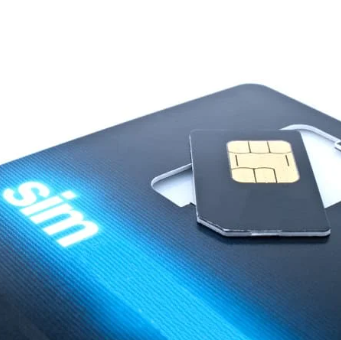In the world of mobile technology, the SIM card plays a crucial role. It’s the heart of your mobile device, storing essential information and connecting you to the network. But like any other piece of technology, a SIM card has a lifespan. So, when should a SIM card be replaced? And why is it necessary to do so? This comprehensive guide will answer these questions and more, providing you with a deeper understanding of SIM cards and their role in your mobile device.

Understanding SIM Cards and Their Role
Subscriber Identity Modules, or SIM cards as they are commonly known, are small, removable cards that store data for GSM cellular phones. They are the key to identifying subscribers on the network, storing information such as the user’s phone number, contact list, and other data. They can also store personal information, such as photos and text messages.
SIM cards are the backbone of your mobile phone’s functionality. They enable your device to connect to a wireless network, allowing you to make calls, send texts, and access the internet. Without a SIM card, your phone would essentially be an expensive paperweight.
The Lifespan of a SIM Card: What to Expect
Just like any other piece of technology, SIM cards have a limited lifespan. The longevity depends on how often you use your phone and how well you take care of it. Your SIM card can last anywhere from a year to several years.
Most carriers recommend replacing your SIM card every two years. This will help ensure that you always have the latest technology and your phone is running as efficiently as possible.
Reasons for Replacing Your SIM Card
There are several reasons why you might need to replace your SIM card. Here are some of the most common:
- Lost or damaged SIM card: If you lose your SIM card or it becomes damaged, you’ll need to replace it to continue using your phone.
- Upgrading to a new phone: If you upgrade to a new phone, it may require a different size SIM card. In this case, you’ll need to get a new SIM card from your carrier.
- Switching carriers: If you switch to a new carrier, you’ll need a new SIM card to connect to their network.
- Traveling abroad: If you travel to another country, you may need to get a local SIM card to avoid roaming charges.
- Expired SIM card: SIM cards can wear out over time, just like any other electronic equipment. If your SIM card has expired, you’ll need to get a new one from your carrier to continue using your phone.
The Importance of Regular SIM Card Replacement
Regular SIM card replacement is essential for several reasons. Here are some of the most important:
- Improved performance: By switching to a new SIM card, you’ll likely be able to take advantage of faster data speeds and other enhanced features.
- Better security: Regular SIM card replacement can help protect against SIM swapping fraud, which is a type of identity theft that involves stealing someone’s phone number and using it to access their accounts.
- Staying up-to-date: Regular SIM card replacement ensures that you always have the latest technology and are compatible with the latest software and networks.
Potential Drawbacks of Not Replacing a SIM Card
While there are many benefits to regular SIM card replacement, there are also some potential drawbacks to not replacing your SIM card. Here are some of the most significant:
- Decreased performance: If you don’t replace your SIM card regularly, you may notice decreased performance. For example, you might not connect to the internet as quickly or make calls as clearly and easily.
- Incompatibility with new software and networks: If you don’t replace your SIM card, you may not be able to take advantage of new software and networks that require a newer SIM card.
- Increased risk of SIM swapping fraud: If you don’t replace your it regularly, you may be at increased risk of SIM swapping fraud. This is because older cards may not have the latest security features that protect against this type of fraud.
The Process of SIM Card Replacement
Replacing your SIM card is usually a straightforward process. Here are the steps you’ll need to follow:
- Contact your carrier: The first step is to contact your carrier and request a new SIM card. You may be able to do this online or over the phone.
- Choose the right size: Make sure you choose the right size for your phone. Most modern phones use nano-SIM cards, but some older phones may use micro or standard SIM cards.
- Activate your new SIM card: Once you receive your new SIM card, you’ll need to activate it. This usually involves inserting the SIM card into your phone and following the instructions provided by your carrier.
- Transfer your data: If you have any data stored on your old SIM card, you’ll need to transfer it to your new SIM card. This may involve using a SIM card reader or transferring the data manually.
SIM Swapping: Legitimate and Illegitimate Reasons
SIM swapping is when you request a new SIM card from your current or new operator and transfer your existing phone number to the new SIM. There are plenty of legitimate reasons for SIM swapping, such as losing your phone or upgrading to a new one. However, there are also illegitimate reasons for SIM swapping, such as SIM swapping fraud.
SIM swapping fraud occurs when cybercriminals trick your carrier into activating a new SIM card with your phone number. Once this is done, the scammer has full access to your phone and information. They can intercept one-time passwords and two-factor authentication messages, giving them access to your accounts.
Protecting Yourself from SIM Swapping Fraud
Protecting yourself from SIM swapping fraud is essential. Here are some tips to help you stay safe:
- Use strong, unique passwords: Make sure you use strong, unique passwords for all of your accounts. This will make it more difficult for cybercriminals to gain access to your accounts.
- Enable two-factor authentication: Two-factor authentication adds an extra layer of security to your accounts. It requires you to enter a code that is sent to your phone or email in addition to your password.
- Monitor your accounts: Regularly monitor your accounts for any suspicious activity. If you notice anything unusual, contact your carrier and financial institutions immediately.
- Be cautious of unsolicited calls or texts: Cybercriminals may try to trick you into giving them your personal information by pretending to be your carrier or financial institution. Be cautious of unsolicited calls or texts and never give out your personal information unless you are sure it is safe to do so.
FAQ
Q: How often should I replace my SIM card?
A: Most carriers recommend replacing your it every two years.
Q: Can I use my old SIM card in a new phone?
A: It depends on the size of the and the compatibility of the phone. You may need to get a new SIM card if your old one is not compatible with your new phone.
Q: What happens if I don’t replace my SIM card?
A: If you don’t replace your it, you may notice decreased performance, incompatibility with new software and networks, and an increased risk of SIM swapping fraud.
Q: How can I protect myself from SIM swapping fraud?
A: To protect yourself from SIM swapping fraud, use strong, unique passwords, enable two-factor authentication, monitor your accounts for suspicious activity, and be cautious of unsolicited calls or texts.
Q: Can I transfer data from my old SIM card to my new one?
A: Yes, you can transfer data from your old SIM card to your new one using a SIM card reader or transferring the data manually.
In conclusion, understanding the importance of card replacement and the potential risks of not doing so is crucial for every mobile phone user. Regular SIM card replacement ensures optimal performance, better security, and compatibility with the latest software and networks. So, don’t wait until you start experiencing problems with your phone. Be proactive and replace your as recommended by your carrier.





